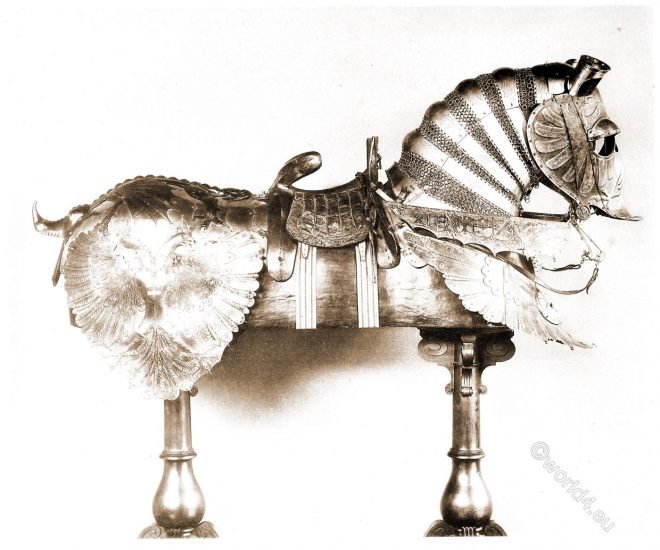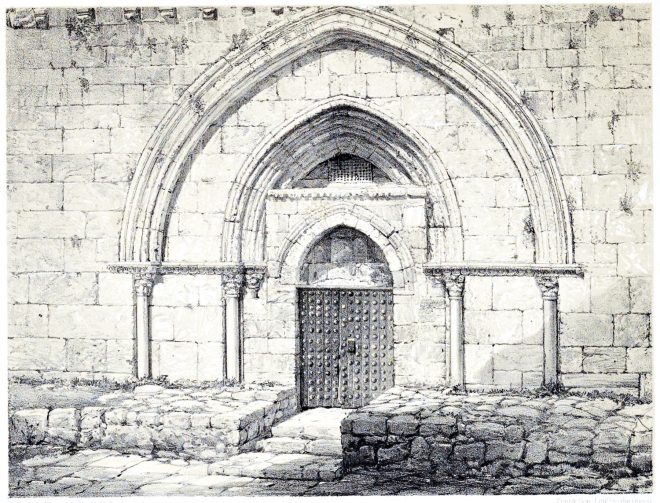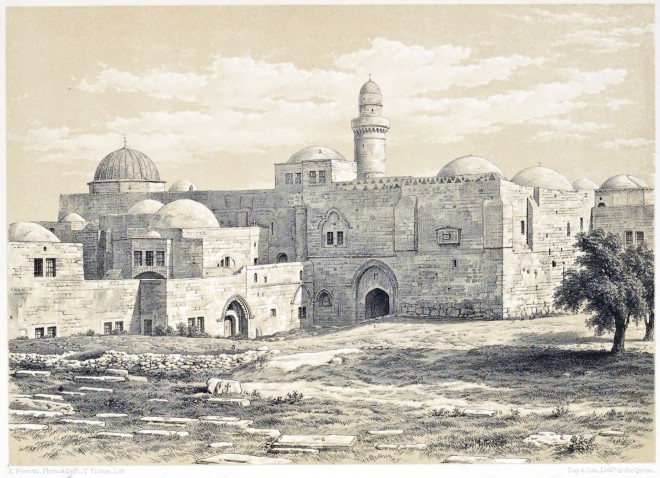Christian tradition sees Antonia Castle as the place where Jesus Christ is said to have been sentenced to death by Pontius Pilate.
Category: Genre
Heavy horse armor of Emperor Maximilian I. from c. 1508.
This complete “Rossgelieger” is of excellent quality. The breastplate, called “Fürbug”. The saddle is a so-called “crib saddle”.
The Tomb of the Virgin Mary. The Cave of the Agony. Plans, sections.
Jerusalem Explored. Plans and sections of the Tomb of the Virgin Mary, and of the Cave of the Agony
The Cenacle and the Tomb of David of Mount Sion at Jerusalem.
View, plan and section of the Cenacle (Coenaculum); of the so-called tomb of David; and of the underground works of Mount Sion.
The Trinitarian Order in the Roman Catholic Church.
The Trinitarian Order is an order in the Roman Catholic Church. It was founded at the turn of the 13th century and was originally a monastic order dedicated to the spiritual struggle against Islam.
View of the Church of S. Anne in the Old City of Jerusalem.
View of the Church of S. Anne. Plans and sections. Interior and four details of ornamentation.
Jerusalem. Entrance to Hospital of the Knights of St. John
Jerusalem Explored by Ermete Pierotti. Arch of the time of the Knights of S. John. Ruins of the Church of S. Mary the Great.
Jerusalem. South-eastern extremity of the Valley of Siloam.
View of Mount Zion, Mosque el-Aksa, Ophel, Valley of Hinnom, Mount of Offence, Valley of the Kidron, Bir-Eyub. En-Rogel, Walls and Ruins.
Mount of Olives and the Garden of Gethsemane at Jerusalem.
The Mount of Olives in Jerusalem is an elevation northeast and east of the Temple Mount and the Old City of Jerusalem.
The Fountain of Job in Gehenna, the Valley of Hinnom outside Jerusalem.
A view of a fountain house in Gehenna, the Valley of Hinnom outside Jerusalem.










